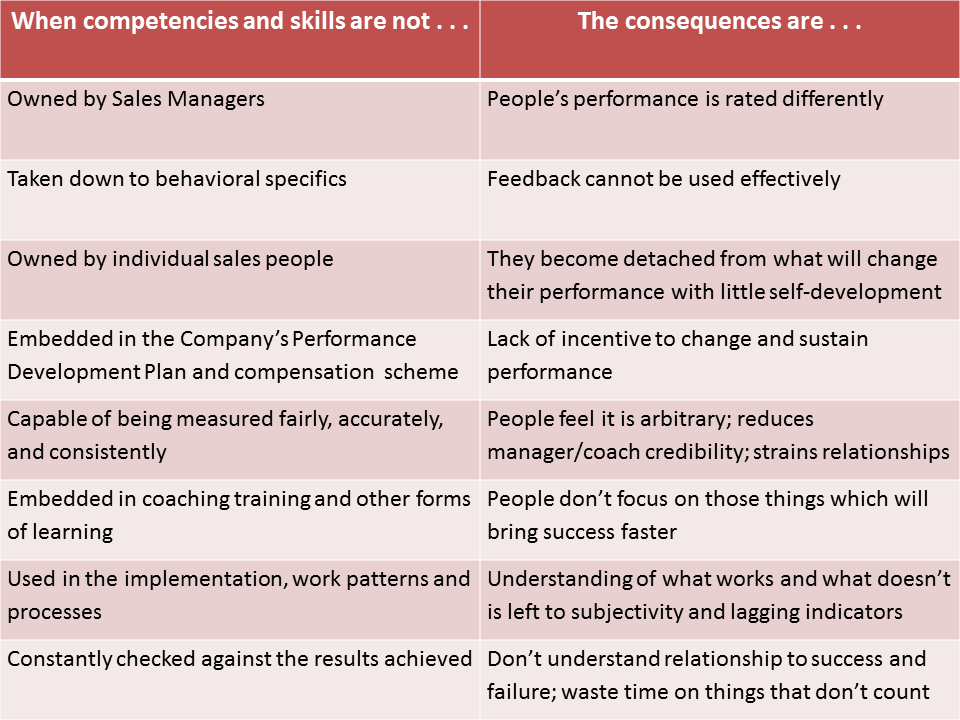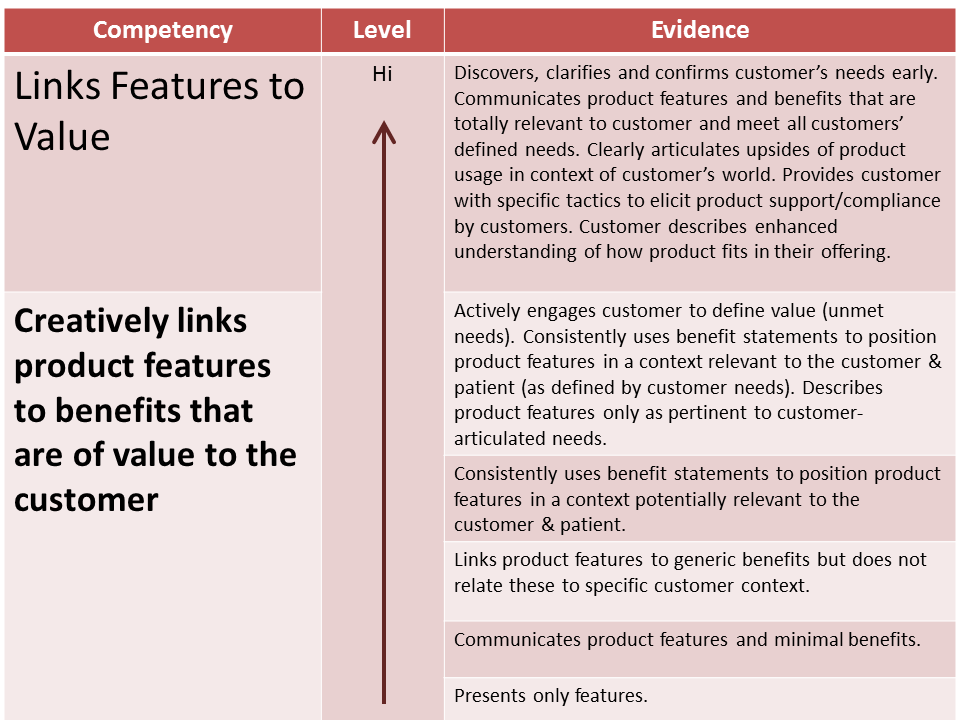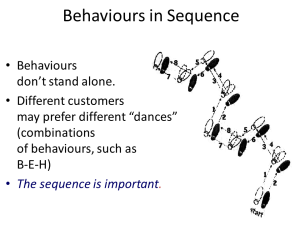Watch the video of this blog
Over the last 25 years, sales executives have become jaded about sales training’s contribution to the bottom line. For many, memories of being pulled from the field for some grizzly sales training remain. Today there are hundreds such programs . . . from being customer value centered, to chasing foxes (tiring at best),  to filling shark charts and don’t forget your green sheets!
to filling shark charts and don’t forget your green sheets!
Yes, these approaches point the way, but too many sales managers don’t realize how ingrained their salespeople’s habits really are. Even if they manage to get them to complete their “forms” they lack the awareness of when they are not in sync with different and changing customer needs. This is really prevalent in those sales people whose past success was in products that sold themselves. They got mentally lazy differentiating on value or service. For example, the telecommunications and IT markets in the early 2000s. Consequently, many are unaware changes before it’s too late, like:
- Competitive changes in strategies and tactics where they once could rely on price to win
- Needing to sell to different people in a customer but being too comfortable with those they talk to yet no longer have influence
- Better management and coaching to improve their performance but they still avoid such interactions because of past experience.
- Good managers playing different roles depending on a sales’ complexity yet they still try to land deals fearing their manager insertion into the sale is too risky
Yes, you could try and recruit better people but good sales professionals are in scarce supply and in today’s market you have to look even harder (if you can afford them commodity). So, desperation sets in. Many rely on recruiting those who say they can sell ( they probably can to some degree), but not consistently for long periods in competitive markets. These salespeople often don’t know good from bad, right from wrong, so they try to plagiarize the latest sales guru’s book. They then drain needed resources while they experiment abusing technical support and systems engineers long before they are needed.
Why do we continue to make the same mistakes? Why haven’t we learned that understanding “the sales process” is not the same as figuring out how to sell well? If we did have this realization then your sales training wouldn’t be another “flavor of the month!” Then, we wouldn’t have the kind of turnover that gives sales executives heart burn. So, let’s put aside the Guru’s book for a moment and get back to basics. Simply,
Winning more orders at lower cost, more profitably than your competition.
To get to the basics, let’s put your sales process, CRM and training in the proper place – in the tool bag. It’s how well you coach your people to win that matters. When they “get it”, they will use the right tools to get the job done. Problem is, most sales managers aren’t ready to coach new and struggling salespeople beyond, “do it like this” or “I’ve told you before, don’t @#$$% do that”. They take the easy way out, resorting to new sales processes, CRMs, formulas and techniques rather than really helping them close deals! And finally when these things really don’t work they fall back on managing them out and hire anew.

Recruit – Train – Ignore – Admonish – Fire
Then sales managers end up performing like hamsters in a wheel.
But is there a better way? Coaching to Win!
So, what does coaching to win mean? Let’s me ask you:
- How well do you know the extent of your sales forces’ competency gaps? If you do,
- How good are you at helping them get better?
If your answer make you feel uneasy, see if the following help you narrow down why your coaching to win is not firing on all cylinders.

OK. So you get a sense of where I am coming from. Let’s look at how you can start improving things. What do we mean by a sales competency? Three things are crucial:
- What do you want them to do better? Is it directly related to your sales strategy? For example: Getting them to be better presenters of the product isn’t really that important when you are trying to differentiate yourselves in terms of service.
- Can you improve those competencies within your window of opportunity? For examples: getting people to sell consultatively after many years of transactional selling is not going to happen within a year. Do you have a year?
- Can you identify, in behavioral terms, what you want them to do? and Can they give you evidence of their improvement?
Remember: There is real value in mutually agreeing competency issues between you and one of your sales team. If you both agree on what needs to be worked on, you have the base to the seller to value not fear accurate diagnosis. You now create the transparency to hear open admissions like, “I don’t know”. Now, honesty and curiosity can bloom and the real work of establishing competitive advantage can begin.Here’s an example to give you some ideasIn my experience, there are usually three or four competency areas that most salespeople need to know where there skills lie and what they need to improve. Typical examples are:
- Product & Disease Knowledge
- Customer Value Management
- Competitive Differentiation
- Calling Higher & Wider
Each area has skills pairings that help us analyze and coach skilled performance. For instance one client identified that their salespeople need to:
- Understand both the industry issues and product issues,
- Improve Territory Management
- Develop Customer Value
Let’s take the last competency as an example. We needed to separate the analytical or thinking skills from the customer facing behavior ones and then describe how the two types of skills work together… In this case Uncovering Customer Value (Thinking) and Developing Customer Value (Doing). Other clients found the following useful:
- Customer Value Development can be divided into “Sales Development”(Thinking) and “Relationship development (Doing)
- Competitive Differentiation can be divided into “Competitive Analysis” (Thinking) and Competitive Tactics (Doing)
When each skill pairing is used skillfully a salesperson can differentiate their value and capability from their less competent competitors. These Paired Behaviors form the basis for skilled sales people sequencing their behavior to be more attuned to customer in the competitive arena. Skills are then developed as understanding grows on how to use these pairings as building blocks. As such skill grows you understand what works in certain situations starts building a Competitive Playbook. These “plays” can them form sequences of behavior of successful sales interactions. Now when these “plays’ are observed, measured and replicated salespeople accelerate the skills development. Such discipline then can identify which behavioral sequences differentiate the average from the top performers. More importantly, you can then identify which sequences differentiate your reps from their competitors.Isolating behavioral sequences of analytical and customer facing skills provides opportunity to:
- Demystify your organization’s sales language,
- Clarify what protocols are needed to protect your selling activities
- Replicate good and eliminate bad habits.
Now I can guess what you’re thinking . . . . How can I start paying attention to their behaviors when I need to pay even closer attention to their sales numbers? The reality….. you won’t get the numbers not unless they change what they do. What do you want to do? Speed up these changes? or let them figure it out on their own? Time is not on your side as competitive differentiation relies more on the excellence of your sales people. The upside of focusing on how you get the numbers not just on the bottom-line is that you create a difference that is difficult to copy. Better yet, if you send out a more competent sales team, the competitor is going to have to adapt to it. And that takes time . . . time you can use to create clear water between you and them!
Who then is responsible for developing sales competence?
Not the HR Department. Yes they can help but not lead this activity. It’s down to sales management to lead and be materially involved in. Of course we do hear the odd excuse. Here are some examples:
- I have too many direct reports
- I don’t have the time to …..
- It’s difficult enough appraising them without having to…
Yes, it takes time but its time well spent. Isn’t finding out what it takes to win worth it?I make no apology for saying you have to get into the weeds on this one:
- Defining your competencies
- Teasing out behavioral sequences
- Agreeing evidences for growth
And of course going through this with your people is crucial. Then, you, the sales manager, no longer need to feel unprepared for coaching sessions. You can develop new, exciting reasons to make sales calls with their people, because there are actually real behavioral evidences out there that all sales reps can improve in one way or another. And, you get to be a hero by helping them to win.
Let’s look at an example of one skill from the Pharmaceutical Industry, where managers and sales people went through this process

You see how they, together, are drawing a more objective road map to greater competence.Now you have specific behaviors and “behavior sequences” to work on that can move the sales conversion along faster, and with less customer resistance. The manager has focused the sales rep on specific behaviors that will make him better at what he does, faster! Isn’t that what we call increasing sales productivity?
 In your own sales arena let me ask:What do you know about behavior sequences that would improve customer outcomes?When did you last talk to your salespeople about how they behave and ask them to agree on performance evidence for key skills?
In your own sales arena let me ask:What do you know about behavior sequences that would improve customer outcomes?When did you last talk to your salespeople about how they behave and ask them to agree on performance evidence for key skills?
Summary
Building sales success consistently is founded on knowing and improving your win rate at less cost and more profitably than your competition. A crucial factor to doing this is establishing and coaching to a robust and jointly developed Competency Cascade. From focusing on strategically relevant competencies, to pairing thinking and doing skills then agreeing the evidences of competent performance, Finally coaching them to use effective behavior sequences. Every sales force should articulate the evidences of effective behavior for their market.Remember: It’s not what the salesperson knows that counts. It’s what they (and we) don’t know that matters. Finding out what behaviors your reps need to evidence and coach them to produce those evidences for you, consistently, is far more likely to produce better sales results than worrying about the numbers
[polldaddy poll=4604847]
© Copyright All Rights Reserved, The Crispian Advantage [2010-2012]. Unauthorized use and/or duplication of this material without express and written permission from this blog’s author and/or owner is strictly prohibited. Excerpts and links may be used, provided that full and clear credit is given to Nick Anderson, The Crispian Advantage
This post is based in part on material provided by PDS Group LTD to which the author helped developed and has permission to use.
